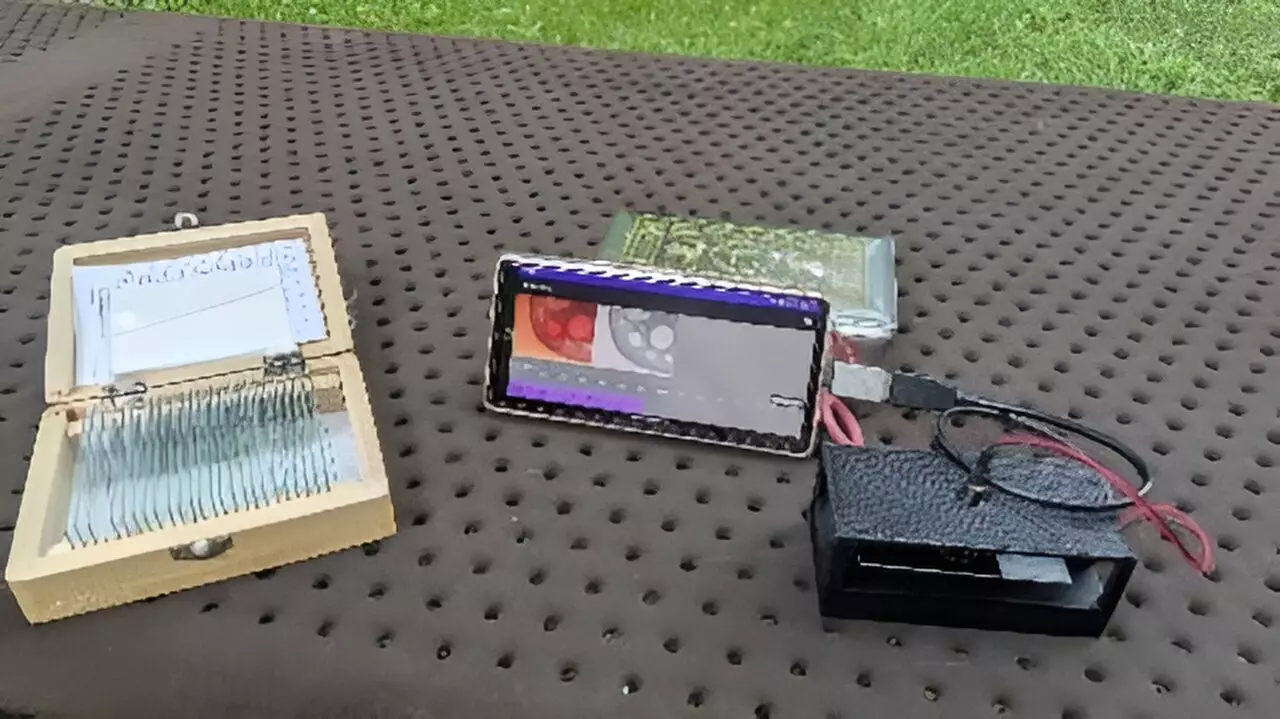In an age where technology continuously transforms scientific research, the introduction of a smartphone-based digital holographic microscope stands out as an exemplary breakthrough. This innovative tool, developed by researchers from the Tokyo University of Agriculture and Technology, is not only cost-effective and portable, but it also holds the potential to democratize 3D measurement technology across various fields. With significant implications for education and healthcare, particularly in resource-limited settings, the microscope exemplifies how collaboration with advanced digital solutions can lead to conveniences previously reserved for well-funded laboratories.
Understanding Holographic Microscopy
Traditional holographic microscopy employs complex optical setups and hefty computational resources, often restricting its usage to stationary laboratories. Utilizing interference patterns between a light source and the specimen, these microscopes capture intricate details about the sample’s structure—both external and internal. However, the constraints of bulky equipment and necessary computational power have limited accessibility and practical application. The typical barrier of entry has restrained users from experiencing the advantages of this technology, particularly in educational or underserved environments.
The innovative approach of Yuki Nagahama and his team redefines existing paradigms by breaking down these barriers. They have ingeniously leveraged smartphones—a device ubiquitous with the general public—to enable sophisticated holographic scrutiny, promising to replace cumbersome systems with significantly more accessible alternatives.
The Design and Functionality
The heart of the new digital holographic microscope lies in its remarkably simplified optical design. By utilizing a 3D-printed optical system and integrating it with a smartphone’s processing capabilities, the researchers have created a product that can easily fit in a bag while delivering high-level functionality. This fresh perspective enables users to operate the microscope in any setting, from classrooms to remote field locations, without the traditional encumbrance of lugging around great machinery.
Real-time processing stands as one of the key features of this microscope. Utilizing cutting-edge techniques such as band-limited double-step Fresnel diffraction, the researchers enhance the speed of hologram reconstruction. This development reduces the computational load that typically bogs down mobile devices, allowing for an engaging user interaction where one can actively zoom into and manipulate holograms through simple gestures on a smartphone screen.
Educational and Medical Applications
The implications of this technology for educational uses are profound. Students can now engage directly with living samples, observing biological processes in real-time—a much-needed enhancement, given the growing emphasis on hands-on learning experiences in science education. Schools, particularly those in underprivileged areas, can now afford access to once unattainable technology, fostering a new generation of skilled scientists who are proficient in modern microscopy techniques.
Moreover, the potential for medical applications is equally transformative. For instance, this microscope could significantly enhance point-of-care diagnostics, enabling healthcare workers in developing regions to diagnose conditions like sickle cell disease without the necessity of expensive laboratory equipment. By providing practitioners with access to portable diagnostic tools, we may witness increased efficiency in medical responses, ultimately improving health outcomes in underserved populations.
Challenges Ahead and the Role of Deep Learning
While the advantages are substantial, the researchers recognize that challenges remain. The presence of artifacts in the reconstructed holograms can complicate the imaging process, making it imperative to refine the technology further. The impending integration of deep learning capabilities presents a promising approach to address this issue. By employing artificial intelligence algorithms to analyze and refine image quality, researchers can enhance the clarity and usability of the output, ultimately improving its efficacy in practical scenarios.
As advancements unfold, the collaboration between engineering, biology, and computer science will be vital in understanding the best methods to elevate the capabilities of this remarkable instrument. As the team continues its innovative journey, we can anticipate that the intersection of technology and medicine will yield impressive outcomes for diagnostics and education.
This portable digital holographic microscope exemplifies a forward-thinking marriage between advanced imaging technology and everyday accessibility. It’s not just a tool; it symbolizes a shift toward equitable access to scientific inquiry and healthcare solutions, reflecting a future where technology serves as a bridge rather than a barrier.

